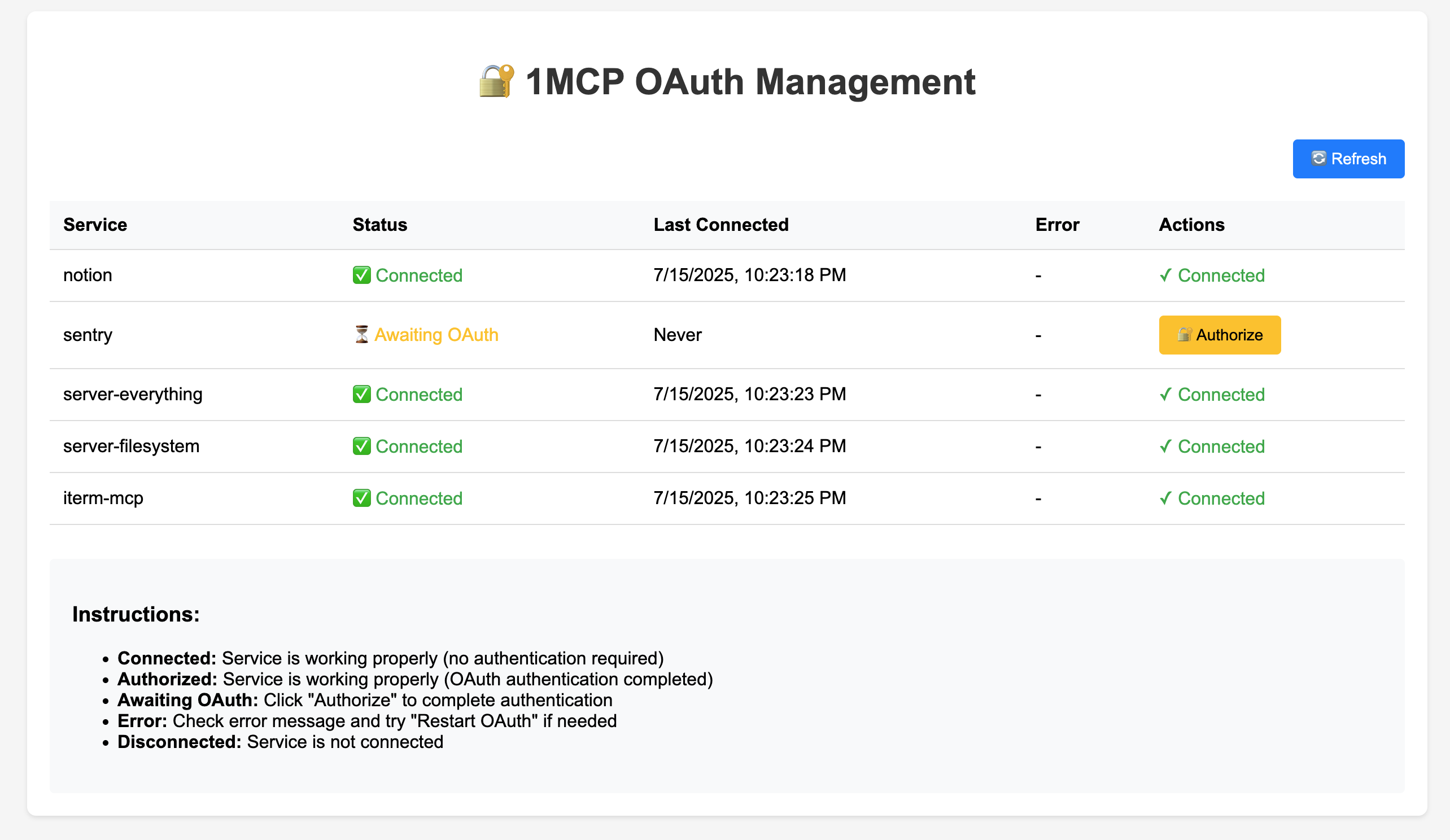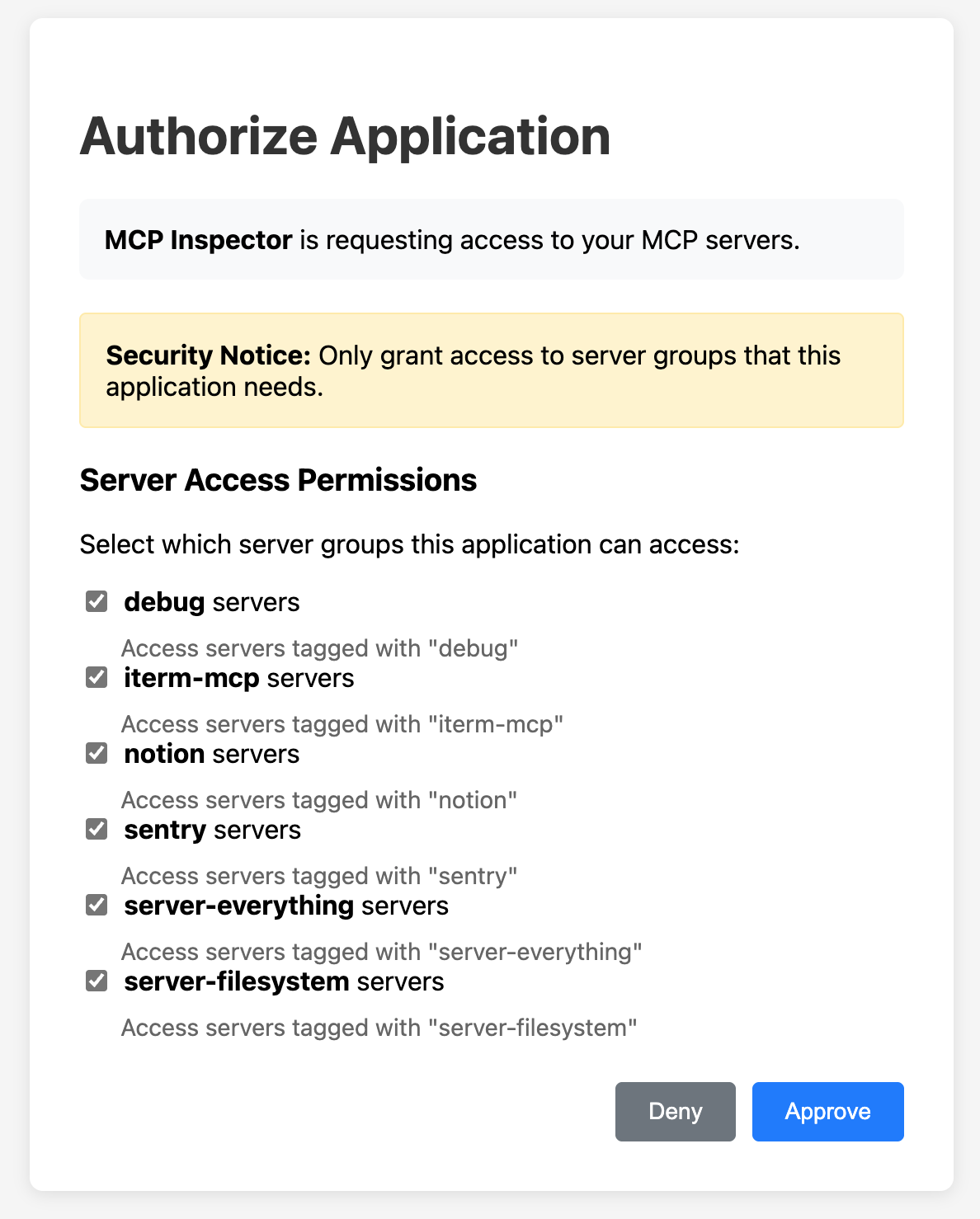Authentication
The 1MCP Agent uses a dynamic, SDK-based approach to OAuth 2.1 authentication. Instead of a static configuration file, the agent provides a set of command-line flags and environment variables to configure authentication, and an interactive dashboard to manage the authorization flow with backend services.
Enabling Authentication
To enable authentication, start the agent with the --enable-auth flag:
npx -y @1mcp/agent --config mcp.json --enable-authThis will activate the OAuth 2.1 endpoints and require authentication for all incoming requests.
OAuth Management Dashboard
Once authentication is enabled, you can use the OAuth Management Dashboard to manage the authorization flow with your backend services. The dashboard is available at the /oauth endpoint of your agent's URL (e.g., http://localhost:3050/oauth).
The dashboard allows you to:
- View the connection status of all your backend services.
- Initiate the OAuth flow for services that require authorization.
- Approve or deny authorization requests.
Here's a preview of the management dashboard:

When you initiate the authorization flow, you will be prompted to approve or deny the request:

Tag-Based Scope Validation
The agent supports tag-based scope validation, which allows you to control access to backend services based on their tags. When a client requests an access token, it can specify a set of tags as scopes. The agent will then only allow the client to access services that have all the requested tags.
To enable tag-based scope validation, use the --enable-scope-validation flag:
npx -y @1mcp/agent --config mcp.json --enable-auth --enable-scope-validationConfiguration
For a complete list of authentication-related configuration options, see the Configuration documentation.
